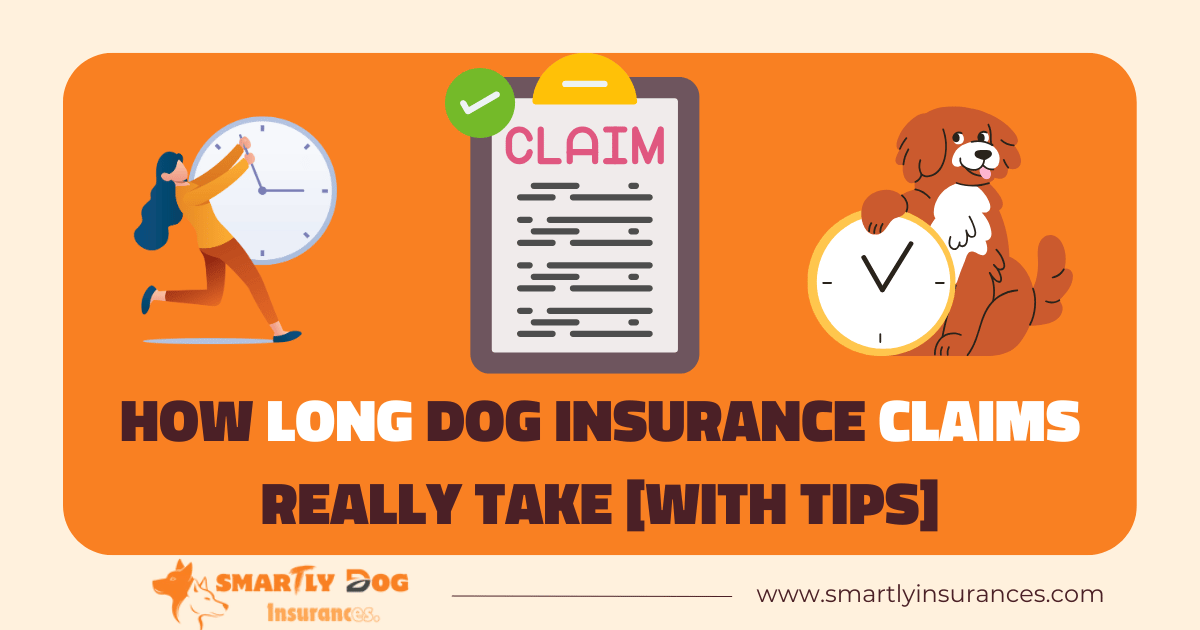Pet insurance claims typically take 7 to 10 working days to process. Most pet owners find this timeline surprisingly long while they wait anxiously for their dog insurance payout.
The actual time to receive your money back can vary substantially. Your claim might face additional delays or rejections if you submit it after the standard 30-day window. The same applies to claims filed during waiting periods, which last 2 to 30 days based on coverage type.
Unexpected vet bills create enough stress already. The wait for reimbursement adds to your worry. This complete guide will help you understand your dog insurance claim timeline and show you ways to make the process faster.
Understanding Pet Insurance Claim Timelines
Pet insurance companies process claims at different speeds. Most standard claims take 5-7 business days. First-time claims need 7-14 business days to process.
Average processing times
Simple claims wrap up within two weeks. Complex cases might need more time. To cite an instance, when a pet needed Parvo treatment costing USD 5,000, the reimbursement took two months. Some companies are faster than others. Healthy Paws settles claims in 3-7 days. Pets Best might take 45-90 days to process your claim.
Factors affecting claim speed
Your claim’s processing time depends on these key factors:
- Pre-existing condition verification
- Completeness of medical records
- Type and complexity of claim
- Provider’s processing system
- Availability of digital submission options
Digital vs paper claims comparison
Digital platforms have changed how claims work today. Online claims move faster than paper ones. Web platforms let you track your claim’s progress live. You’ll get a confirmation within 2 business days after submitting.
Digital platforms make the whole process smoother by cutting out paperwork. You can send documents and important details right from your phone or computer. Claims with complete documentation sent through digital platforms get processed quickly. Payments often start within 1-2 business days after assignment.
Required Documents for Quick Claims
Good documentation helps process pet insurance claims faster. Your claim has a better chance of approval when you submit all the right papers.
Essential paperwork checklist
Three main documents are the life-blood of your claim submission. You need a final invoice from your vet that shows you’ve paid in full or has a zero balance. This invoice must have:
- An invoice number and your pet’s name
- Itemized services with associated costs
- Final invoice amount including discounts and taxes
Your pet’s detailed medical records are vital, especially from the latest annual exam. These records, known as ‘SOAP notes’ (Subjective, Objective, Assessment, and Plan), tell your pet’s medical story.
Common missing document issues
Delayed claims happen most often because of missing or incomplete paperwork. Insurance providers put claims on hold for three main reasons:
Incomplete invoices top the list of problems. Pet owners send partial invoices or wrong documents like account summaries and pharmacy receipts.
There’s another reason claims get stuck – gaps in medical records. Your insurance company needs detailed records from every vet your pet saw 12 months before the policy started. For puppies, kittens, or newly adopted pets, records from when they joined your family are enough.
The third biggest problem comes from unclear diagnosis notes. Each claim needs a clear explanation of why you visited the vet. Claims get stuck without this information, and your vet will need to provide more details.
Ask your vet for ‘SOAP notes’ to avoid these problems. These detailed notes have exam details, lab results, and treatment plans – everything needed to process your claim quickly.
Step-by-Step Claim Submission Guide
Filing a pet insurance claim needs attention to detail and good timing. Here’s exactly how you can submit your claim and get it approved.
Preparing your claim
New claims need proper preparation because insurance companies look at your pet’s complete medical history. You should organize your documents by date and check if your claim fits the submission window – usually 90 days from treatment.
- Review your policy coverage details
- Collect itemized invoices showing payment
- Gather medical records (SOAP notes)
- Verify proof of payment documentation
- Double-check waiting period requirements
Digital submission tips
Most insurance providers now have optimized digital platforms that handle claims faster than old methods. These platforms give you direct access through customer accounts and speed up processing times.
Mobile apps are the quickest way to submit claims. You can start the process right at the vet’s office. You’ll get the best results when you take clear photos of your documents and upload them through your insurer’s platform.
Following up effectively
Tracking your claim is vital after submission. Most providers send confirmation within 48-72 hours. All the same, you should contact your insurer right away if you haven’t heard back.
These tracking methods work well:
- Monitor your claim through the provider’s online portal
- Set up direct deposit for faster reimbursement
- Respond quickly to any requests for additional information
Good communication with your vet and insurance provider will give a smooth process. A quick call to your vet’s office can help speed up the process if your insurer needs more information from them.
Common Causes of Claim Delays
Pet insurance claim delays happen due to several factors that slow down reimbursement. Claims handlers spend 35% of processing time managing claim documents.
Incomplete documentation
Missing or incorrect paperwork is the top reason for delayed claims. Claims handlers note that 20% of all claims have documentation problems. Common documentation issues include:
- Outdated ZIP code information
- Missing itemized vet bills
- Incomplete medical records
- Incorrect policy details
Pre-existing condition verification
Insurance providers need a full review of medical history to verify pre-existing conditions. They look at records from 18 months before the policy starts. This verification takes extra time because insurers must collect and analyze records from multiple vet clinics.
Payment processing issues
Administrative processes and verification requirements cause payment delays. Insurance companies need to verify each claim’s validity before sending reimbursements. This verification helps keep premium costs reasonable by ensuring payments go only to legitimate claims.
Modern automated systems show promise in reducing these delays. These systems can verify claims and assess conditions through detailed AI analysis quickly. Claims now move faster through approval stages and need fewer customer interactions.
42% of pet insurance customers say processing delays are their biggest frustration. They dislike waiting weeks or months for reimbursement while paying expenses out of pocket. Direct integration between vet clinic software and insurance systems could speed things up, but 70% of providers still lack this capability.
Tips to Speed Up Your Claim
Pet owners can speed up their insurance claims with two powerful strategies: pre-authorization and direct vet payments.
Pre-authorization benefits
Pre-authorization is a great way to get help with expensive procedures. We used this process to verify coverage before treatment starts. You can submit a pre-certification form to determine exact reimbursement amounts. This information helps you plan your budget effectively.
Pre-authorization works best in these situations:
- When you think over costly treatments
- For procedures exceeding USD 1,000
- To confirm coverage details upfront
- While learning about multiple treatment options
Direct vet payment options
Direct vet payment saves you from paying large sums upfront. Several insurance providers now offer this feature, though availability varies by clinic. Your insurer pays the veterinary clinic directly instead of reimbursing you later.
You’ll need to sign a veterinarian reimbursement release form. The insurance company sends eligible reimbursement amounts straight to your vet’s office after processing your claim. You still need to pay deductibles, co-insurance amounts, and non-covered items.
Direct vet pay makes the financial process smoother. This option helps especially when you have emergencies or face substantial veterinary bills. All the same, note that not all clinics accept direct payments, so check with your preferred veterinarian first.
Some veterinary hospitals have specific payment policies. To cite an instance, facilities might accept direct payment exclusively for bills exceeding USD 1,000. Insurance providers may also offer this option based on individual financial circumstances.



